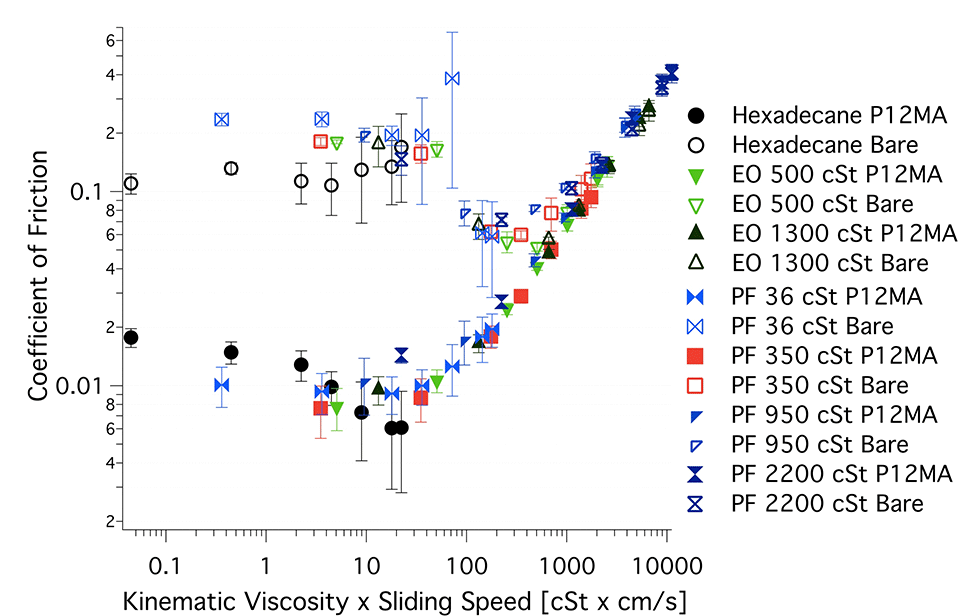Lubricating with Oil-compatible Polymer Brushes
General Aspects of Brush Lubrication
The combination of a polymer brush with an oil has the potential to combine the excellent boundary lubrication properties of brushes with the rheological and high-temperature advantages of oil.
Hydrophobic polymer brushes under oil can provide a thick, soft, swollen polymer layer that prevents asperity-asperity contact between the mating surfaces. In this situation, a low-shear-strength plane at the contact zone is expected. A covalently tethered polymer brush, when immersed in a good solvent for the polymer, will effectively become a soft lubricant reservoir. The brushes are able to support significant normal loads before any detectable increase in a shear force between the sliding surfaces could be observed.
The friction-reduction mechanism for solvated polymer brushes is attributed a) to repulsive terms consisting of the osmotic pressure within the brush system plus the resistance to interpenetration of the grafted chains, combined with b) the confinement of the lubricant within the contact area and c) the formation of a low-shear interface in the outer reaches of the brush, where solvent concentration
is the highest.
Particular Research Interest
A series of coatings based on poly(alkyl methacrylate) polymer brushes (Figure 1) are synthesised and tribologicaly evaluated in various liquids. For the purpose of polymer coating fabrication various grafting-from strategies are used; including surface-initiated atom transfer radical poylmerisation (SI-ATRP), surface-initiated free radical polymerization (SI-FRP). To complete the experimental approach facile grating-to strategies as means to form oil-compatible hydrophobic coatings are employed as well. Relying on the frictional data, bad and good solvents can be identified for each polymer and their further applicability in oil-based lubrication is assessed.

Specifically, a detailed study of lubricant, speed and load influence on coefficient of friction for poly(dodecyl methacrylate) polymer brushes is being carried out. Most promising results of the brush aided-lubrication can be presented on the Stibeck-like curves where the specific base stock did not appear to affect this behaviour significantly (all were good solvents for the polymer brush). Interestingly, the transition between mixed and boundary regimes for the bare-bare system occurrs at the same viscosity x speed number as the hydrodynamic-brush transition for the brush-brush case. The polymer brushes were shown to be stable over thousands of reciprocating cycles (>100 m total distance), maintaining low coefficient-of-friction values e.g. for hexadecane below 0.012. Nonetheless an optimisation of the structure and the lubricant is of interest to further enhance the stability and to possibly enlarge the speed range at which polymer brushes deliver very low coefficient of friction values.

References
- external page Bielecki, R.M., Benetti, E.M., Kumar, D., Spencer, N.D.: Lubrication with Oil-Compatible Polymer Brushes. Tribology Letters 45(3), 477-487 (2012).
- Bielecki, R.M., Spencer, N.D.: Polymer-Brush Lubrication in Oil: Sliding Beyond the Stribeck Curve. Tribology Letters submitted (2012).